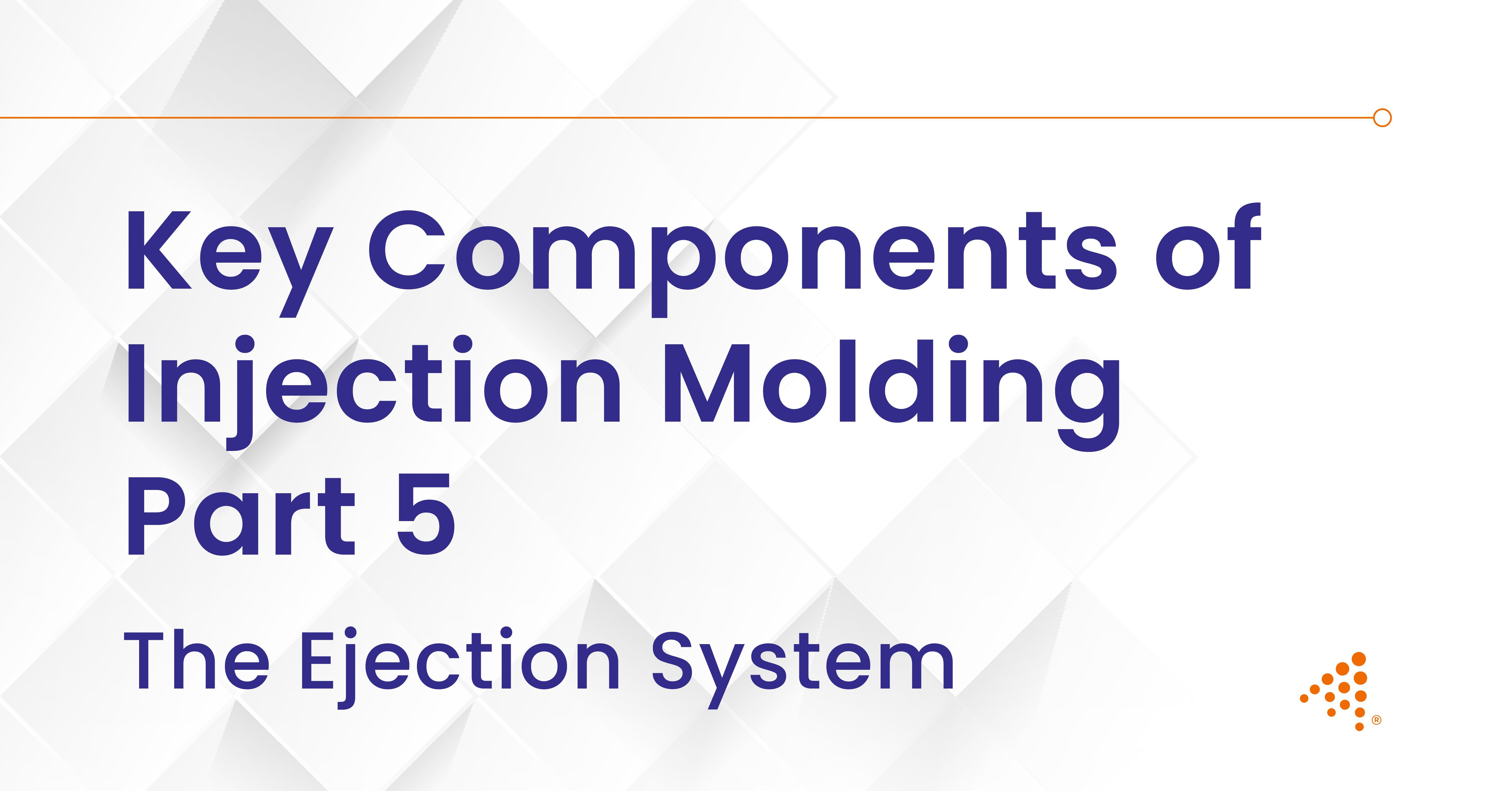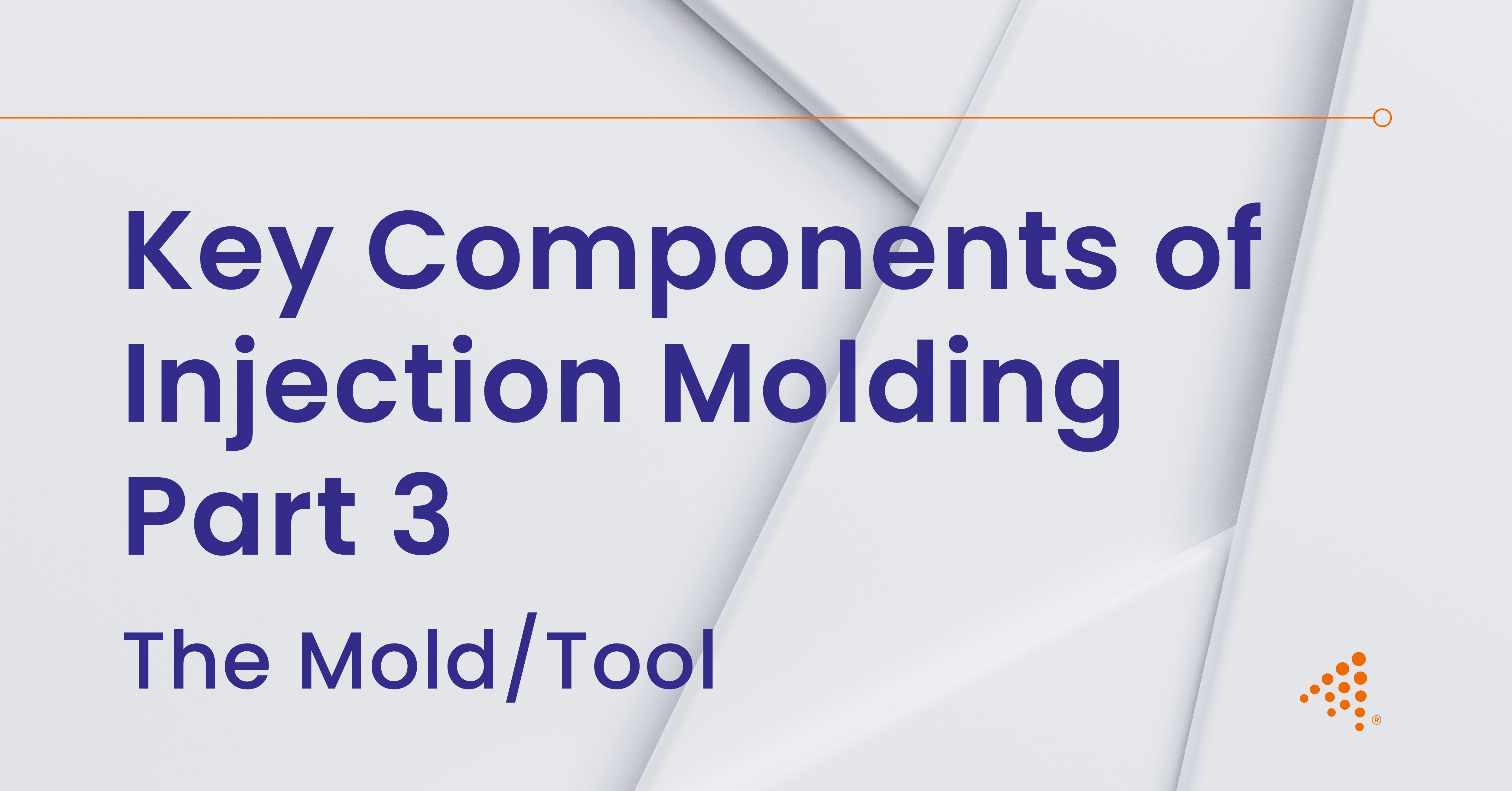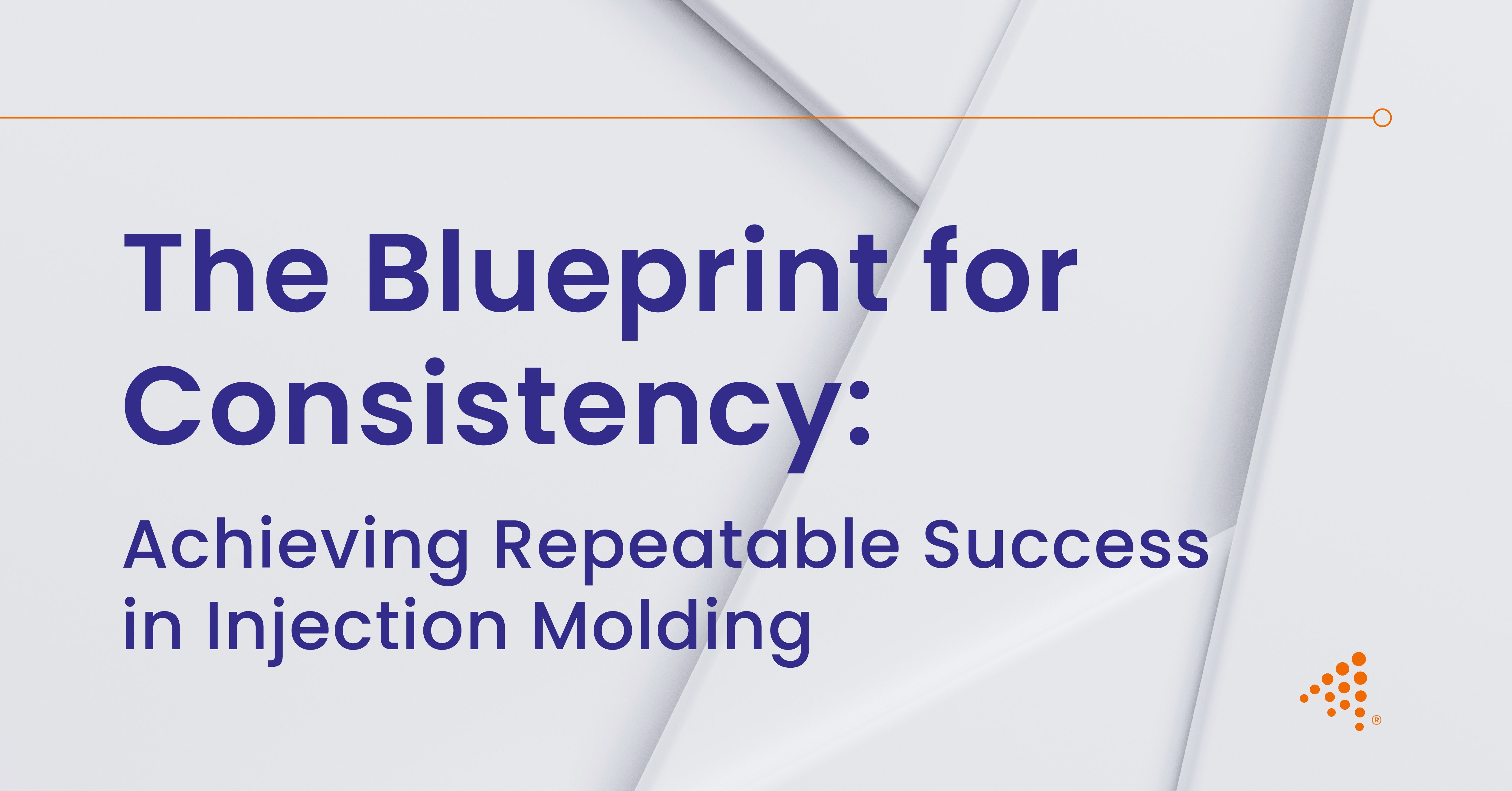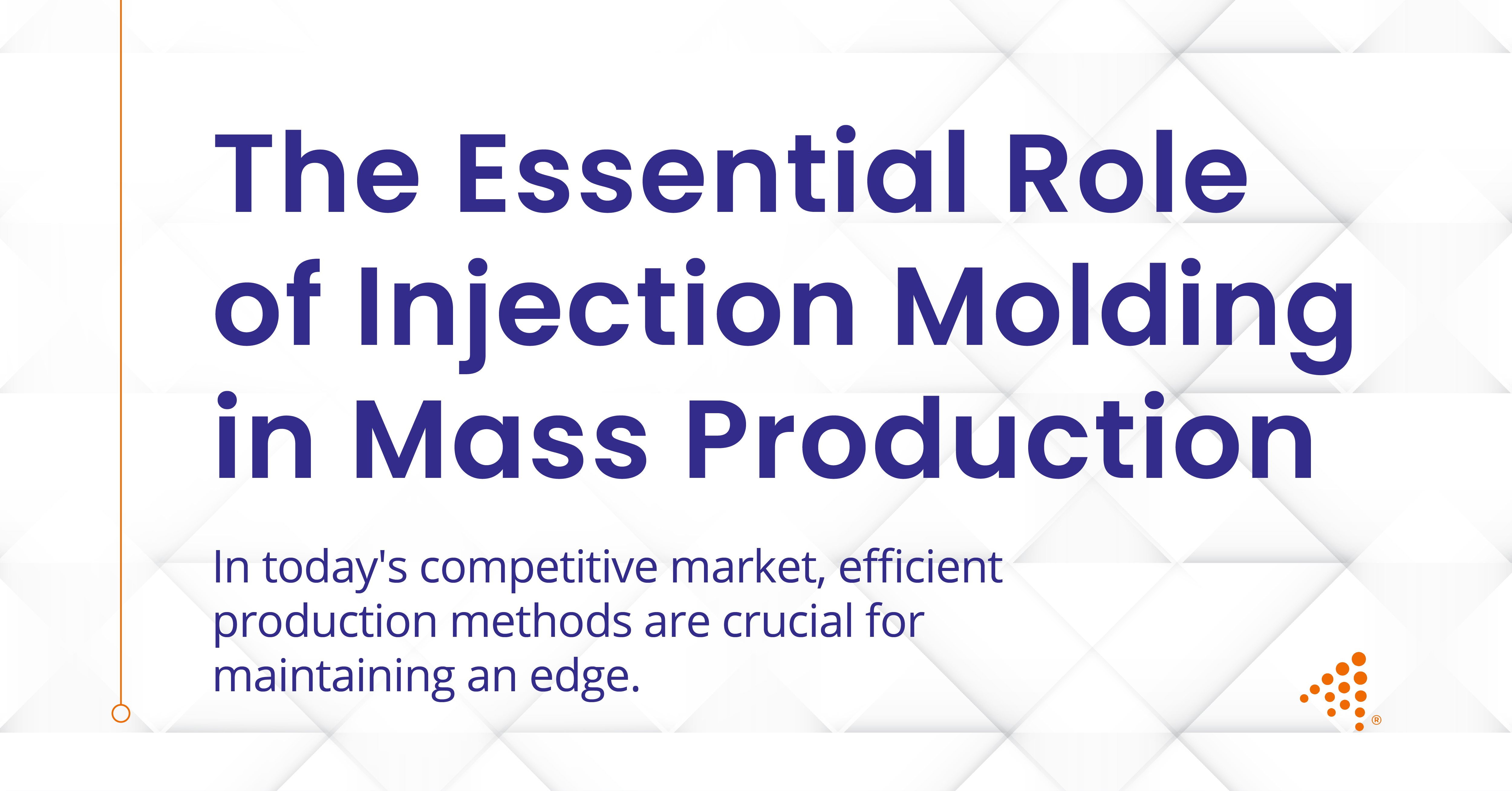3 min read
Key Components of Injection Molding Part 3: The Mold/Tool
In injection molding, the mold (or tool) is the core element that shapes the molten plastic into the final part. It is a precision-engineered...
7 min read
Nick Erickson : Jun 19, 2025 9:40:00 AM

The injection molding process is a symphony of precisely orchestrated stages, each playing a vital role in transforming raw plastic material into a finished product. Once the molten plastic has been injected into the mold cavity and has cooled sufficiently to solidify, the moment of extraction arrives. This task falls to the ejection system, an integral part of the injection mold, designed to carefully and consistently remove the newly formed part from the mold. The effectiveness of the ejection system directly impacts part quality, cycle time, and the overall efficiency of the manufacturing operation. A well-designed system pushes the part out smoothly, without causing distortion, surface blemishes, or internal stresses, which is particularly important for high-precision components found in medical devices and other demanding sectors. Understanding the components and mechanics of the ejection system is fundamental for anyone involved in design and manufacturing services or sourcing injection molded parts from a plastic injection molding company.
Read More About Guide to Polypropylene (PP): A Versatile Material for Manufacturing
An effective ejection system is tailored to the specific geometry of the part, the material being molded, and the design of the mold itself. Several key components work in concert to achieve reliable part removal.
Ejector pins are arguably the most common and fundamental components used for part ejection. These are hardened steel pins that pass through the mold's ejector plate and push directly against the solidified plastic part to overcome the forces of adhesion and vacuum that hold it in the mold cavity or on the core. The strategic placement, number, and diameter of ejector pins are determined during the Design for Injection Molding (DfIM) phase. They must apply sufficient force evenly across the part's surface to dislodge it without causing bowing, puncture marks (often called pin push), stress whitening, or fractures.
For components with cosmetic surfaces, pin placement is often restricted to non-visible areas or designed to leave minimal, acceptable witness marks. Different types of ejector pins, such as through-hardened pins, case-hardened pins, or nitrided pins, offer varying degrees of strength and wear resistance, selected based on the production volume and molding material. Stepped ejector pins or pins with specific tip contours can also be used for particular part features.
When parts have cylindrical bosses, posts, or core pins that form internal diameters, ejector sleeves often provide a superior solution to simple pins. An ejector sleeve is a hollow pin that fits over a core pin in the mold. During ejection, the sleeve moves forward, pushing on the annular area of the part surrounding the core pin. This method provides a balanced ejection force around the feature, preventing it from breaking or becoming distorted, which might occur if only one or two standard ejector pins were used on a delicate cylindrical boss. Ejector sleeves are particularly beneficial for thin-walled cylindrical sections or when the part material is relatively soft or brittle.
For parts with thin ribs, narrow walls, or elongated, flat sections where round ejector pins might concentrate too much stress or provide insufficient contact area, ejector blades are employed. An ejector blade is essentially a rectangular or D-shaped ejector pin. Its flat, elongated profile allows it to distribute the ejection force over a wider, narrower area. This is advantageous for ejecting parts along edges or ribs without causing indentations or damage. Like ejector pins, the material, hardening, and surface treatment of ejector blades are chosen to withstand the rigors of repeated cycling.
For certain part geometries, particularly those with large open cavities (like cups or containers), thin walls, or a tendency to stick extensively to the core, a stripper plate or stripper ring offers the most gentle and uniform ejection method. A stripper plate is a plate that forms a part of the mold cavity or core surface and moves forward to push the entire periphery of the part, or a significant portion of it, off the core. This distributes the ejection force over a very large surface area, minimizing stress concentrations and reducing the risk of part deformation, warping, or puncturing. Stripper systems are more complex and costly to implement than pin ejection, but for suitable parts, they can significantly improve part quality and ejection reliability. They are often used for high-volume production where part cosmetics and dimensional stability are paramount.
In situations involving very delicate, thin-walled, flexible, or lightweight parts, or where even minor witness marks from pins or sleeves are unacceptable, air ejection can be an effective solution. This method uses precisely timed blasts of compressed air directed at the part-mold interface to break the vacuum seal and gently push the part out of the cavity or off the core. Air poppets or strategically placed air passages are integrated into the mold. While it offers a "touchless" ejection, air ejection requires careful design to control the air pressure and direction, and to verify that the part is consistently ejected to the desired location for removal by a robot or operator. It's often used for Medical Injection Molding, food-grade packaging, some medical disposables, and optical components.
While not strictly an ejection component in the same category as pins or plates, lifters play a vital role in releasing parts with undercuts or features that would otherwise trap the part in the mold. Lifters are mold components that move at an angle relative to the mold opening direction. As the ejection system activates, the lifter moves forward and sideways, simultaneously pushing the part feature and disengaging it from the undercut in the mold. Once the part is clear, the lifter retracts. The design of lifters is complex and adds to the mold's cost and maintenance, but they are indispensable for many complex part designs.
Read More About The Ultimate Guide to ABS for High-Performance Manufacturing
The mechanical operation of the ejection system is synchronized with the overall cycle of the injection molding machine. Here's a more detailed, sequential breakdown of its function:
This entire ejection sequence is designed to be as short as possible to minimize the overall cycle time, yet robust enough to perform reliably for thousands or even millions of cycles.
Contact Aprios today to learn how our precision manufacturing services and expertise in injection molding can help you achieve flawless part ejection, reduced cycle times, and superior part quality for your next project.
The ejection system might seem like a straightforward mechanical function, but its design and performance are profoundly important for the success of any injection molding project, especially when producing high-precision parts for sectors like the medical industry. Its significance can be seen in several key areas:
Maintaining Part Quality and Integrity: The primary objective of the ejection system is to remove the part from the mold without causing any damage. Improper ejection can lead to a host of part defects such as ejector pin marks, distortion or warpage, stress whitening, cracks or fractures, and drag marks or scratches. A well-engineered ejection system distributes force appropriately, considers the part's geometry and material properties, and functions smoothly to preserve the dimensional accuracy and cosmetic appearance of the molded component. This is particularly vital for DFM for Medical Devices where flawless surfaces and precise fits are often mandatory.
Optimizing Cycle Times and Manufacturing Efficiency: The ejection phase is a direct contributor to the overall cycle time of the injection molding process. A system that ejects parts quickly, consistently, and without requiring manual intervention allows for shorter cycle times and thus higher production output. Conversely, if parts stick, get damaged, or require manual separation, cycle times extend, leading to increased manufacturing costs and reduced efficiency. Smooth, reliable ejection also facilitates automation, further enhancing productivity. This is crucial for quick turn injection molding projects aiming for rapid market delivery.
Prolonging Mold Life and Reducing Maintenance: An ejection system that is not functioning correctly can put undue stress not only on the parts but also on the mold itself. Bent or broken ejector pins, damaged ejector sleeves, or excessive wear on stripper plates can lead to costly mold repairs and downtime. Proper design, material selection for ejection components, and regular maintenance of the ejection system contribute to the longevity of the expensive injection mold. Verifying that ejector pins are properly guided and lubricated (if applicable) can prevent premature wear and failure.
Enabling Complex Part Geometries: Automated manufacturing systems rely heavily on consistent and predictable ejection. If parts fail to eject properly, robots can malfunction, causing safety hazards or production stoppages. Proper ejection design supports safe, reliable automation integration, critical in modern custom manufacturing services setups.
Material Considerations: Different plastic materials have varying degrees of stiffness, lubricity, and shrinkage, all of which affect how easily a part will release from the mold. For example, softer, more flexible materials like Thermoplastic Elastomers (TPEs) may require more surface area for ejection to prevent damage, while rigid, low-shrinkage materials might release more easily but could be more prone to cracking if ejection forces are misapplied. The design of the ejection system, often refined during a thorough Design for Manufacturing (DFM) process, must take these material characteristics into account.
In essence, the ejection system is a silent but powerful partner in the injection molding process. Its thoughtful design and robust operation are fundamental to achieving high-quality parts, efficient production, and the successful realization of product designs, from simple components to intricate medical devices.
If you're looking to enhance your molding processes or have questions about optimizing your ejector system, Aprios is here to assist you. Our team of experts can provide tailored solutions to improve part removal and ensure efficient, high-quality production.

3 min read
In injection molding, the mold (or tool) is the core element that shapes the molten plastic into the final part. It is a precision-engineered...

In high-stakes manufacturing, particularly for medical devices, the ability to produce a part that is identical to the one before it, and the one...

In today's competitive market, efficient manufacturing methods are crucial for maintaining a commercial edge. Injection molding stands out as a vital...